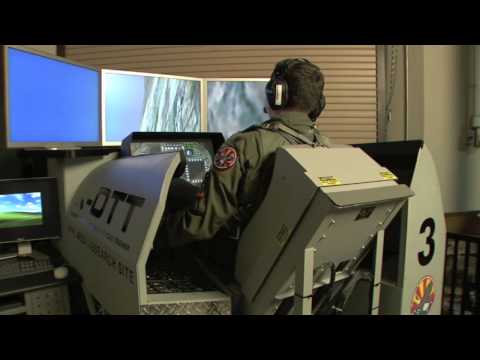
When many people think of a military flight simulators they envision the bulbous enclosure on the gigantic hydraulic legs. Sure, motion platforms are one type of flight simulator. But, there’s a vast range of trainers that are not that complex and not that expensive. There are trainers available that fit right into your standard classroom or even in your offices. These ‘right-sized’ trainers can meet your training needs and your budget.
There’s Many Training Options
Right-Sized Flight Simulators Sophisticated training is possible with just a small cockpit enclosure, realistic controls and instruments, and motion cueing to emulate the feel of flight. For example, the DTT trainer shown on this page is from the Air Force Research Laboratory (AFRL). The simple cockpit shell is filled with virtual instrument displays and high-fidelity controls. The trainer uses a sophisticated F-16 flight model coupled to wrap around monitors and ACME’s Dynamic Motion Seat for cueing. It’s a convincing, right-sized, right-priced F-16 trainer. AFRL used this trainer to conduct extensive pilot training testing. It’s been digitally linked to other simulators too allowing the pilot in this trainer to ‘fly’ with or against pilots in the same training facility or across the country. It has even been used to fly simulated missions virtually alongside real aircraft flying actual missions. The U.S. Air Force Academy is using a similar but simpler cockpit system with ACME’s motion seat to train cadets in their Systems Engineering classes and to evaluate pilot training tasks. Right-sized simulators can accomplish a range of training tasks. Smaller simulators with motion seats are invaluable for instrument flight trainers where the pilot learns to feel the aircraft but to trust the instruments. Or, smaller trainers can be used for ingress or egress trainers teaching maintenance and flight crews to safely enter and exit the cockpit. Smaller part-task-trainers can train tasks like switchology, and coupled with motion can emulate the challenges of seeing some instruments or controls while under heavy maneuvers.
Crews can buckle right into the True Q® seat just as they would in the aircraft. Pitch, roll and yaw are just a start to the cueing capability. The motion seat can include vertical and horizontal acceleration cues too and vibrations and buffets. Special effects like the feel of flaps or gear extending are possible. So are ground taxiing cues like surface textures, skids, or even flat tires. You can even feel the jet taxiing over the expansion joints between concrete sections of the flight line. It’s that sophisticated!
[pdf-embedder url=”https://www.acme-worldwide.com/wp-content/uploads/2017/04/Right-Sized-Trainers-with-Motion-small.pdf” title=”Right Sized Trainers with Motion (small)”]
The Right Motion Seat is Available for Any Light Attack Jet Trainer
Many light jets have a pilot and an observer or weapon officer in the cockpit. The same arrangement is easily possible in a small trainer. ACME’s motion seats support the tandem crew trainer with a special, cost-reducing capability. A single True Q® motion seat computer can drive two ACME motion seats in the same trainer. This advantage reduces overall acquisition and long-term support costs. ACME can help with the right motion seat for your right-sized, right-priced, light attack trainer. The motion seat provides exceptional cueing capability as key component in the trainer.
